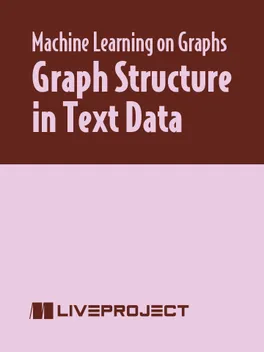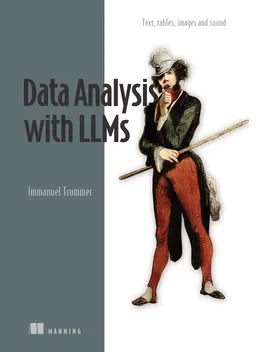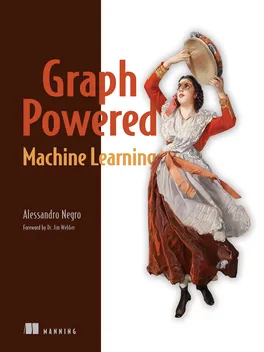pro $24.99 per month
- access to all Manning books, MEAPs, liveVideos, liveProjects, and audiobooks!
- choose one free eBook per month to keep
- exclusive 50% discount on all purchases
- renews monthly, pause or cancel renewal anytime
lite $19.99 per month
- access to all Manning books, including MEAPs!
team
5, 10 or 20 seats+ for your team - learn more

Imagine you work for a company that publishes scientific articles created by its customers—primarily researchers and scientists in the field of statistics—whose volume of research has grown so large that it’s not possible for your company to read every paper nor for the researchers to stay on top of everything happening in the field. Your task is to use automated means to find some structure in the collection of scientific articles so that the company can more easily home in on the researchers’ interests and help them research more effectively. To do that, you’ll generate document embeddings, use them to impute a document graph, and execute graph algorithms against this graph in order to generate insights from it.
prerequisites
This liveProject is for Natural Language Processing (NLP) practitioners who have an intermediate level of knowledge of the Python programming language (especially in the NLP domain) and who are ready to uplevel their NLP skills by applying graph-based tools to their text corpora. To begin these liveProjects, you’ll need to be familiar with the following:
TOOLS
- Intermediate Python
- Basic SpaCy, Neo4j database, and the Neo4j Graph Data Science (GDS) library
- Intermediate linear algebra
- Basic NLP and Graph Theory
- Intermediate NLP
 features
features
- Self-paced
- You choose the schedule and decide how much time to invest as you build your project.
- Project roadmap
- Each project is divided into several achievable steps.
- Get Help
- While within the liveProject platform, get help from fellow participants and even more help with paid sessions with our expert mentors.
- Compare with others
- For each step, compare your deliverable to the solutions by the author and other participants.
- book resources
- Get full access to select books for 90 days. Permanent access to excerpts from Manning products are also included, as well as references to other resources.
team
- five seats for your team
- access to all Manning books, MEAPs, liveVideos, liveProjects, and audiobooks!
- choose another free product every time you renew
- choose twelve free products per year
- exclusive 50% discount on all purchases
- renews monthly, pause or cancel renewal anytime
- renews annually, pause or cancel renewal anytime
-
![]() Graph Structure in Text Data project for free
Graph Structure in Text Data project for free



















 Graph Structure in Text Data project for free
Graph Structure in Text Data project for free